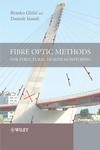
FORTH ROAD Bridge bosses have no idea just how many of the steel wires that make up the main support cables have snapped, The Courier can reveal.
Although engineers fitted a special listening device last year to detect breakages, they have no way of knowing how many failed before the system was installed.
However, officials at the Forth Estuary Transport Authority insisted at the weekend the bridge is still safe to use.
At least 103 of the 23,236 five millimetre thick steel strands stretched between North and South Queensferry are known to have snapped. More may have failed and engineers are planning to open up the cables next month to carry out further safety checks.
Coming just days after the Scottish Government confirmed a new bridge will be built at Queensferry, the need for another crossing becomes only too clear. The new bridge will be built just to the west of the Forth Road Bridge and is scheduled to open by 2016.
The problem with the cables first became apparent in 2004 when the protective seals were broken for the first time since the bridge was built. Twenty-two broken wires were found at one point, as well as evidence of corrosion in many of the others. A much fuller survey was carried out the following year, which led to the discovery of 64 more breakages at other points.
FETA installed a high-tech acoustic monitoring system in August of last year.
It began listening to what was going on inside each of the giant cables and recorded the noise of more cables breaking. The system is so sensitive it can pinpoint exactly where the breaks occurred. Seventeen further steel strands have snapped since it was installed.
Engineers estimate the bridge has lost between eight and 10% of its strength.
Barry Colford, deputy bridgemaster, said the results of the acoustic monitoring to date have been in line with expectations and that the bridge is perfectly safe to use.In an attempt to slow down or halt the corrosion problem FETA is installing a dehumidification system to dry out the inside of the cables.
When asked what percentage of cables had now snapped, a spokesman for the authority said, “We can’t give you a total number because acoustic monitoring only detects new breaks, it can’t tell us how many wires had broken before the system was installed.”
Although engineers fitted a special listening device last year to detect breakages, they have no way of knowing how many failed before the system was installed.
However, officials at the Forth Estuary Transport Authority insisted at the weekend the bridge is still safe to use.
At least 103 of the 23,236 five millimetre thick steel strands stretched between North and South Queensferry are known to have snapped. More may have failed and engineers are planning to open up the cables next month to carry out further safety checks.
Coming just days after the Scottish Government confirmed a new bridge will be built at Queensferry, the need for another crossing becomes only too clear. The new bridge will be built just to the west of the Forth Road Bridge and is scheduled to open by 2016.
The problem with the cables first became apparent in 2004 when the protective seals were broken for the first time since the bridge was built. Twenty-two broken wires were found at one point, as well as evidence of corrosion in many of the others. A much fuller survey was carried out the following year, which led to the discovery of 64 more breakages at other points.
FETA installed a high-tech acoustic monitoring system in August of last year.
It began listening to what was going on inside each of the giant cables and recorded the noise of more cables breaking. The system is so sensitive it can pinpoint exactly where the breaks occurred. Seventeen further steel strands have snapped since it was installed.
Engineers estimate the bridge has lost between eight and 10% of its strength.
Barry Colford, deputy bridgemaster, said the results of the acoustic monitoring to date have been in line with expectations and that the bridge is perfectly safe to use.In an attempt to slow down or halt the corrosion problem FETA is installing a dehumidification system to dry out the inside of the cables.
When asked what percentage of cables had now snapped, a spokesman for the authority said, “We can’t give you a total number because acoustic monitoring only detects new breaks, it can’t tell us how many wires had broken before the system was installed.”
By Lars Niven, The Courier




No comments:
Post a Comment